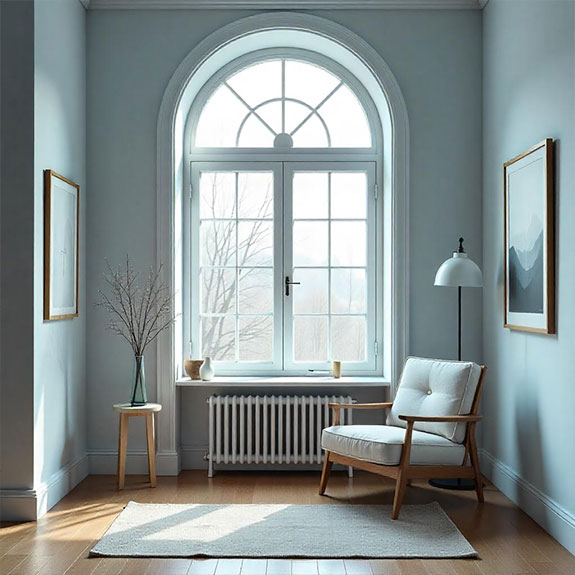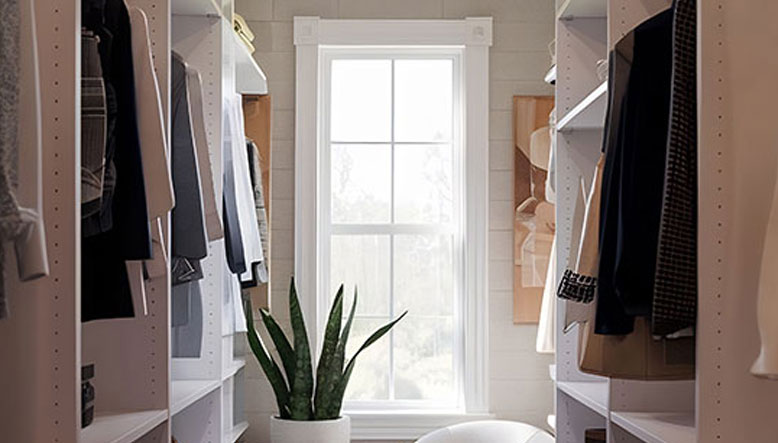Windows are much more than a decorative element in the home. They play an essential role in the energy efficiency, ventilation and aesthetics of any space. Choosing the right window style involves thinking about several factors such as profile type, opening design and thermal insulation, among others. Below, we’ll explore the key elements you should consider to find the perfect window style for your home.
Architectural style of your home
The window style you choose should be in tune with the architectural design of your home. Windows not only provide light and ventilation, but also contribute to the character of the space.

- Traditional homes: Wooden windows or windows with decorative profiles are perfect for adding warmth and a classic touch.
- Modern or minimalist styles: Opt for aluminum or PVC frames, which offer straight lines and a simple look that complements these designs.
- Industrial style: Windows with metal profiles are ideal for spaces with an urban and industrial touch.
Types of window frame materials
Frame materials influence the maintenance, durability and efficiency of windows. Common materials include:
- Wood: Ideal for a warm and natural aesthetic. It offers good insulation, although it requires regular maintenance.
- Aluminum: Popular for its strength and versatility in design, although it has lower thermal performance.
- PVC: Excellent for insulation and low maintenance. Weather resistant, does not deform in the sun and is recyclable.
- Fiberglass: Robust material that does not deteriorate easily. It offers efficient insulation, although it is more expensive.
Each material brings a combination of aesthetics and functionality, so it is important to evaluate which one best suits the needs of your home.
Window opening design
The way a window opens affects the ventilation, access and security of the space. There are different opening styles to choose from:
- Casement: Windows that open outward. They offer excellent ventilation and are easy to clean.
- Sliding: Ideal for small spaces, as they do not require additional space to open.
- Tilt and turn: Allow both full opening and partial tilt for ventilation. Perfect for cold climates or for greater security.
- Sash windows: Vertical opening, ideal for maintaining controlled ventilation in small rooms.
- Skylights: Ideal for illuminating hallways, bathrooms or attics where conventional windows cannot be installed.
Type of glass and its insulation
The type of glass directly influences the energy efficiency and privacy of the home. Here are some options and their characteristics:
- Single glazing: Economical and suitable for mild climates. Does not offer significant thermal or acoustic insulation.
- Double or triple glazing: Provides excellent insulation, reducing noise and improving energy efficiency.
- Laminated glass: Offers greater strength and is ideal for security and acoustic insulation.
- Decorative glass or glass block: Allows light to enter, maintaining privacy in areas such as bathrooms or basements.
Choosing the right glass is essential to maintain indoor temperature, reduce energy consumption and ensure comfort in every room.
Location and size of windows
The location and size of windows influence the natural light and ventilation of spaces:
- Tall, vertical windows: Perfect for deep rooms that need a uniform entry of light.
- Panoramic windows or large windows: Maximize the view and luminosity, ideal for open spaces or with attractive views.
- Small windows in bathrooms or corridors: They ensure ventilation and luminosity without compromising privacy.
To improve lighting efficiency, install windows in north-facing walls to receive indirect light or south-facing walls to maximize sunlight in cold climates.

Thermal and acoustic insulation
Good thermal and acoustic insulation in windows helps reduce energy consumption and maintain a comfortable temperature inside the home. Technologies such as thermal breaks or double glazing significantly improve energy efficiency, which translates into savings and comfort.
How to improve insulation:
- Thermal break: A technology that reduces the passage of cold or heat from the exterior to the interior in aluminum windows.
- Airtight seals: Keep the air inside and block the entry of noise.
- Low-emissivity glazing: Reduces heat loss in winter and overheating in summer.
Current trends in window design
Current trends are oriented towards sustainability, connection with nature and minimalism:
- Large, minimalist windows: Ideal for taking advantage of natural light and creating open spaces that connect with the outdoors.
- Industrial style: Windows with metal profiles and black finish, perfect for modern homes.
- Energy efficiency: Materials and technologies that minimize energy consumption, such as PVC frames and double glazing.
- Integration of interior and exterior spaces: Sliding or folding windows allow a smooth transition between the interior and the terrace or garden.
When choosing the ideal window style for your home, consider both functionality and aesthetics. Well-chosen windows can completely transform the ambiance of a home, bringing light, ventilation and a touch of design. Be sure to think about the architectural style, type of material and glazing that best suits your needs. And remember that in ParaTuReforma we offer you a wide range of options and professional advice so you can find the perfect window for your home.
What type of window is best for extreme climates?
For extreme climates, windows with double or triple glazing and PVC or fiberglass frames are ideal, as they offer excellent thermal insulation.
What are the best windows to maximize natural light?
Panoramic windows and large windows are ideal for taking advantage of natural light. Also, roof windows (skylights) are excellent for illuminating otherwise dark areas.
Which window frame material requires less maintenance?
PVC and aluminum frames require little maintenance and are weather-resistant, making them durable, low-maintenance options.


